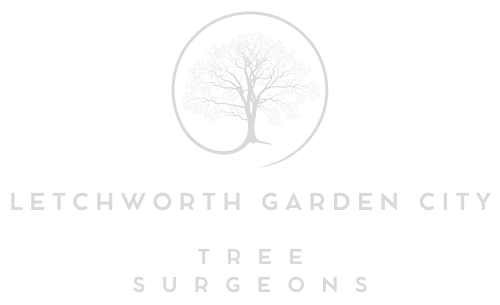7 Tree Problems You Didn’t Know an Arborist Could Solve
Introduction
When most people think of an arborist—or tree surgeon—they imagine someone trimming branches or removing dangerous trees. But in truth, arborists do much more than that. From improving tree health to preventing future structural issues, professional tree surgery covers a wide range of problems that often go unnoticed until they become costly or dangerous.
At Letchworth Garden City Tree Surgeons, we’ve worked with homeowners, landlords, and businesses across Hertfordshire to tackle a surprising variety of tree-related challenges. In this article, we’ll explore seven lesser-known problems that a qualified arborist can help resolve—proving that tree surgery isn’t just about loppers and chainsaws, but long-term care and clever solutions.
Key Takeaways
- Arborists solve both visible and hidden issues in trees and surrounding areas
- Tree problems can impact safety, property value, and neighbouring plants
- Early intervention can prevent extensive damage or removal
- Professional tree care goes well beyond just pruning or felling
1. Unstable or Poorly Anchored Young Trees
Young trees often need more help than people realise. Without proper early support, they may develop a weak root system, lean awkwardly, or grow in a way that compromises future strength. Arborists can assess whether a tree is stable, realign its position, or install professional-grade stakes and supports.
Left uncorrected, an unstable tree can become more vulnerable to wind damage or even topple as it grows.
What we can do:
- Correct improper staking
- Realign leaning trunks
- Encourage healthy root development
2. Soil Compaction Around Tree Roots
It’s easy to overlook the health of the soil around your trees. But compacted ground—often caused by foot traffic, vehicles, or construction—can choke the roots and starve the tree of air and water. An arborist can assess the condition of the soil and carry out specialist aeration to restore a healthy growing environment.
This can reverse declining health in otherwise mature, valuable trees.
Benefits of addressing compaction:
- Improved root function and water uptake
- Healthier canopy growth
- Reduced risk of decline
3. Conflicts with Buildings, Paths, or Neighbours
Trees that grow too close to homes, fences, or neighbouring properties can create a variety of issues. Whether it’s blocking light, damaging surfaces, or causing disputes, an arborist can step in to provide sensible reduction and reshaping, preserving the tree while managing its spread and impact.
This is especially useful in urban and suburban areas like Letchworth Garden City, where boundaries and space are often tight.
Solutions include:
- Canopy reduction
- Crown lifting over roofs or walkways
- Root barrier recommendations
4. Trees Blocking Light or Affecting Gardens
While a mature tree provides welcome shade, too much can create problems for lawns, flower beds, and neighbouring plants that rely on sunlight. An arborist can carry out crown thinning or selective pruning to allow more light through without drastically changing the tree’s structure.
This improves garden usability and helps other plants thrive.
Light-enhancing outcomes:
- Healthier lawns and borders
- Brighter, more inviting outdoor spaces
- Balanced shade and sun throughout the day
5. Trees with Odd or Dangerous Growth Patterns
Trees that grow into strange shapes, develop co-dominant stems, or form weak joints between branches may look quirky but pose hidden risks. These structural issues can lead to major failures in storms or as the tree ages.
Arborists are trained to spot early signs of unstable growth and can restructure the canopy with careful pruning, promoting a safer and more stable tree long-term.
Common corrections:
- Managing crossing branches
- Reducing risk of limb breakage
- Encouraging a single strong leader in young trees
6. Deadwood That’s Hard to Spot
Not all dead branches are obvious. Some sit hidden in the canopy or appear healthy at first glance. However, these brittle and dry limbs are often the first to fall during high winds or heavy rain, posing a danger to people, pets, and property.
An arborist can identify and remove hidden deadwood safely and professionally, especially in large or older trees.
Why it matters:
- Prevents unexpected breakage
- Maintains the tree’s health and appearance
- Reduces hazards in public-facing spaces
7. Trees Affected by Poor Pruning in the Past
Improper pruning—such as topping or over-cutting—can leave trees vulnerable to disease, stress, or disfigured growth. Unfortunately, poor tree care from the past can have lasting effects, but it’s not always irreversible.
Arborists can gradually correct these mistakes over time, restoring a more natural shape and supporting healthy new growth.
Restoration services include:
- Structural pruning to guide future form
- Selective trimming to reduce strain
- Long-term recovery planning
Conclusion
Trees are living structures that need more than just occasional trimming—they require thoughtful, expert care that balances health, aesthetics, and safety. From correcting past mistakes to preventing future hazards, an experienced arborist can solve a far wider range of problems than most people expect.
At Letchworth Garden City Tree Surgeons, we’re proud to offer comprehensive tree care solutions across Hertfordshire. If you’ve got a tree that’s causing concern—or just doesn’t seem quite right—get in touch with our team. We’ll assess the issue and help restore both your peace of mind and the natural beauty of your landscape.
Call us on: 01462 419 196
Click here to find out more about Letchworth Garden City Tree Surgeons
Click here to complete our contact form and see how we can help with your tree needs.

